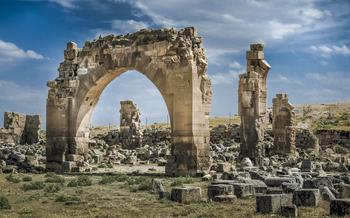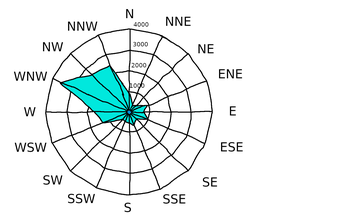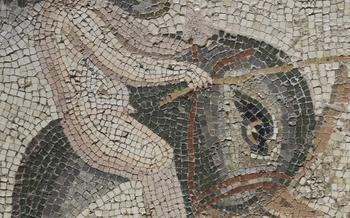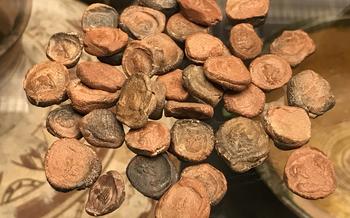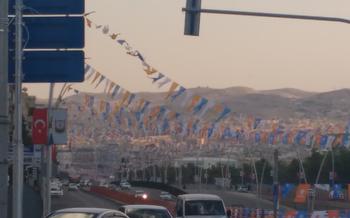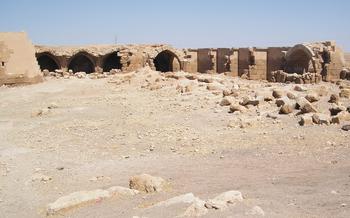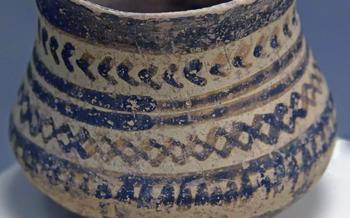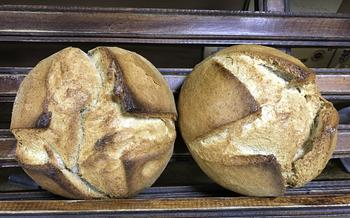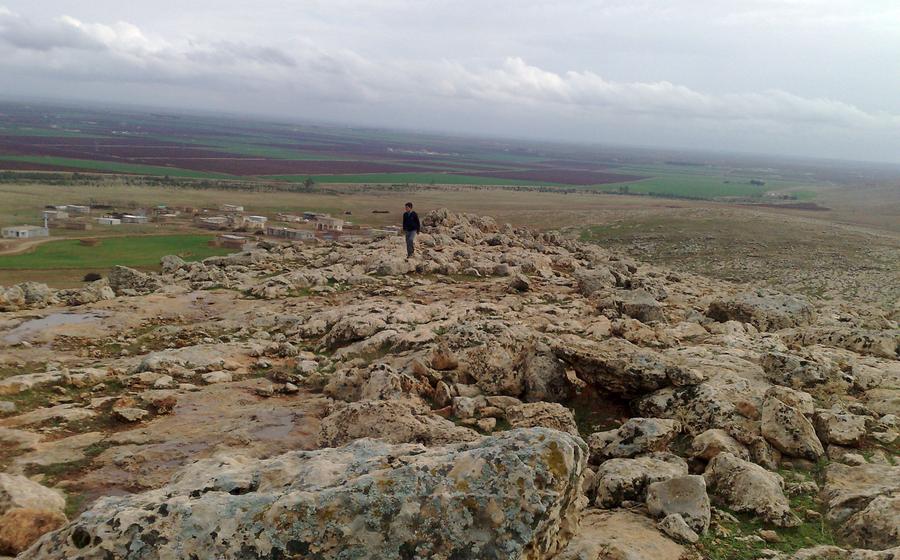
Pirin Ruins
- The Antiquity of Pirin
- Marvelous Mosaics and Sculptures
- A Glimpse into Roman Engineering
- The Impressive Roman Baths and Their Advanced Heating System
- The Well-Preserved Aqueduct System That Supplied Water to the City
- The Architectural Innovations and Urban Planning of the Romans
- Admiring the Ingenuity of Ancient Roman Engineers
- The City Walls and Fortifications
- The Odeon and Theater District
- The Temple of Zeus
- The Agora and Market District
- The Necropolis and Tombs
- The Olive Oil Factory
- The Zeugma Mosaic Museum
- The Birecik Bridge
- The Harran Plain
- The Enchanting Landscape Surrounding Pirin
- Local Cuisine and Delicacies
- Insider Tip: Hot Air Balloon Ride
The Antiquity of Pirin
Amidst the arid plains of Şanlıurfa, the ancient city of Pirin stands as a testament to the region's rich history and cultural heritage. Its ruins, dating back to the 3rd millennium BC, evoke a sense of wonder and intrigue, inviting visitors to step back in time and explore the lives of its long-lost inhabitants.
Pirin, once known as Perrhe, was a significant city in the region, serving as a strategic trading hub and a cultural melting pot. Archaeological excavations have revealed the remains of a sophisticated urban center, complete with temples, theaters, marketplaces, and elaborate fortifications.
As you walk among the ruins, you'll discover intricate mosaics depicting scenes from Greek mythology, delicate sculptures adorning the buildings, and remnants of a once-bustling Roman bathhouse. Each stone bears witness to the artistry and ingenuity of the ancient craftsmen who built this remarkable city.
To delve deeper into Pirin's past, visit the Pirin Museum, a treasure trove of artifacts and information that sheds light on the city's history. Here, you'll uncover the stories of its people, their beliefs, and their daily lives, gaining a profound appreciation for the legacy they left behind.
Marvelous Mosaics and Sculptures
Among the most striking features of Pirin are its exquisite mosaics and sculptures, which adorn the ruins with intricate designs and lifelike representations. The mosaic floors, in particular, are a testament to the artistic prowess of the ancient inhabitants. Depicting mythological scenes, geometric patterns, and scenes from everyday life, these mosaics offer a glimpse into the beliefs, culture, and artistic traditions of Pirin's past.
The mosaics, which have been meticulously restored and preserved, showcase a variety of techniques, including opus tessellatum (small square tiles) and opus vermiculatum (tiny, irregular tiles). The intricate details and vibrant colors of the mosaics bring the stories and scenes they depict to life, allowing visitors to connect with the past in a tangible way.
Equally impressive are the sculptures found throughout the ruins. Carved from stone or marble, these sculptures range from small figurines to larger-than-life statues. They depict gods, goddesses, heroes, and mythical creatures, providing insight into the religious beliefs and artistic conventions of the ancient world.
The artistic influences on Pirin's mosaics and sculptures are diverse, reflecting the city's position at the crossroads of several ancient civilizations. Greek, Roman, and Eastern influences can all be seen in the artwork, creating a unique and eclectic aesthetic.
Today, visitors can admire these exquisite mosaics and sculptures up close, capturing the intricate details and vibrant colors through photographs that will serve as lasting mementos of their journey to Pirin.
A Glimpse into Roman Engineering
The Impressive Roman Baths and Their Advanced Heating System
The city of Pirin boasts an impressive complex of Roman Baths, a testament to the advanced engineering skills of the Romans. Built during the 2nd century AD, these baths were once a hub of social and recreational activities, providing a place for citizens to cleanse, relax, and socialize.
The baths were designed with a sophisticated heating system known as a hypocaust, which ensured a constant supply of warm air to the various rooms. Underneath the floors of the baths, a network of channels carried hot air from a furnace, effectively heating the spaces above. This innovative system allowed for precise temperature control, creating a comfortable and luxurious bathing experience.
The Well-Preserved Aqueduct System That Supplied Water to the City
In addition to the baths, Pirin also boasts a well-preserved aqueduct system that supplied water to the city. Built in the 3rd century AD, this engineering marvel consisted of a series of underground channels and stone arches that transported water from distant springs to the city's reservoirs.
The aqueduct system demonstrates the Romans' mastery of water management. It was designed with a gentle slope to ensure a steady flow of water, and its construction involved careful calculations to maintain the correct water pressure throughout the city. This remarkable system not only provided a vital resource to the inhabitants of Pirin but also showcased the Romans' commitment to public health and sanitation.
The Architectural Innovations and Urban Planning of the Romans
The Romans left a lasting legacy on Pirin's cityscape through their innovative architectural techniques and urban planning. They introduced the use of concrete, a durable building material that allowed for the construction of grand structures. The city's layout was carefully designed, with wide streets, public squares, and impressive buildings arranged in a grid-like pattern.
The Romans also implemented a zoning system, separating residential areas from commercial and administrative districts. This thoughtful planning ensured efficient use of space and created a harmonious and orderly urban environment. Their architectural innovations and urban planning principles laid the foundation for modern city planning and continue to influence urban design to this day.
Admiring the Ingenuity of Ancient Roman Engineers
Visiting the ruins of Pirin offers a glimpse into the ingenuity and engineering prowess of the ancient Romans. From the sophisticated heating system of the baths to the extensive aqueduct network and the innovative urban planning, Pirin showcases the Romans' mastery of engineering and their commitment to creating functional and aesthetically pleasing cities.
As you explore these ruins, marvel at the precision and craftsmanship of the Roman engineers. Imagine the bustling streets, the sound of water flowing through the aqueducts, and the laughter and conversations of the people who once inhabited this ancient city. The ruins of Pirin stand as a testament to the enduring legacy of Roman engineering and offer a fascinating glimpse into the lives of the people who called this city home.
The City Walls and Fortifications
Exploring the Defensive Structures of Pirin
The city walls of Pirin stand as a testament to the strategic importance and defensive capabilities of this ancient city. Constructed to protect its inhabitants from invaders and rival kingdoms, these formidable fortifications once encircled the entire urban area.
As you approach Pirin, the imposing walls rise before you, showcasing the impressive scale and craftsmanship of their construction. The thickness of the walls and the carefully placed towers and gates reveal the defensive prowess of the city's architects.
Follow the perimeter of the walls, marveling at the intricate details and the strategic placement of loopholes and crenellations. Imagine the fierce battles that took place here, as defenders repelled attacks and safeguarded their homes.
Take a closer look at the construction methods and materials used in the fortifications. The sturdy stone blocks, meticulously fitted together, have withstood the ravages of time and remain a testament to the skill and ingenuity of the ancient builders.
Finally, walk along the top of the walls, enjoying a unique perspective of the city and the surrounding landscape. From this vantage point, you can appreciate the defensive advantages offered by the walls, which provided a clear view of approaching enemies and allowed defenders to rain down projectiles upon them.
Explore the towers and gates that punctuate the walls, each serving a specific purpose in the city's defense. The towers provided elevated vantage points for archers and scouts, while the gates were heavily fortified to prevent unauthorized entry.
These fortifications are not merely relics of the past; they offer a glimpse into the military prowess and strategic thinking of the Pirin people. As you wander along the walls, let your imagination transport you back in time to an era of fierce battles and heroic defenses.
The Odeon and Theater District
A Stage for Ancient Performances
A highlight of Pirin's cultural heritage is its well-preserved Odeon and Theater District, offering a glimpse into the city's vibrant artistic scene. The Odeon, a smaller and more intimate venue, was specifically designed for musical performances and recitals. Its acoustics are remarkably well-preserved, allowing visitors to imagine the melodious sounds that once filled the air. The larger theater, situated nearby, hosted dramatic performances, cultural events, and public gatherings. Its impressive seating arrangements and stage design showcase the advanced architectural techniques of the Roman era. Attending a performance or concert in the restored Odeon is a unique experience, transporting visitors back in time to witness the cultural traditions of ancient Pirin.
The Temple of Zeus
Amidst the ruins of Pirin stands the majestic Temple of Zeus, a testament to the grandeur and devotion of the ancient inhabitants. This colossal structure, dedicated to the Greek god of thunder and lightning, was once the heart of religious life in the city. Its imposing presence and intricate architectural features evoke a sense of awe and wonder.
The temple's facade showcases a colonnade of towering columns, each meticulously carved with intricate details. The pediments above the columns are adorned with elaborate sculptures depicting scenes from Greek mythology, narrating tales of gods and heroes. The grand entrance leads to a spacious interior, where a colossal statue of Zeus once stood, radiating power and divinity.
The Temple of Zeus was not merely a place of worship but also a center for religious rituals and festivals. Devotees would gather here to pay homage to the mighty god, seeking his favor and protection. The temple's sanctity and spiritual significance made it a focal point for communal celebrations and ceremonies.
As you explore the ruins of the Temple of Zeus, let your imagination transport you back to a time when gods and mortals coexisted. Contemplate the beliefs and practices of the ancient Pirin people as you marvel at the architectural splendor of this sacred site.
The Agora and Market District
The bustling agora, or marketplace, was the economic and social heart of ancient Pirin. Located in the center of the city, it was a hive of activity where merchants, traders, and shoppers haggled over prices, exchanged goods, and socialized. The agora was lined with shops, stalls, and warehouses, each specializing in different products, from fresh produce to exotic spices to handmade crafts.
The market district was not just a place of commerce but also a meeting place for the community. People gathered here to catch up on the latest news, gossip, and political debates. It was also a place for entertainment, with street performers, musicians, and storytellers often plying their trade. The vibrant atmosphere of the agora was a testament to the wealth and prosperity of Pirin.
Imagine the sights, sounds, and smells of the ancient marketplace: the colorful displays of fruits and vegetables, the aroma of freshly baked bread wafting from the bakeries, the hum of conversations and laughter filling the air. Here, you could find everything you needed, from essential household items to luxury goods. The agora was a place where people from all walks of life came together, creating a vibrant tapestry of human interaction.
Today, visitors to Pirin can still get a glimpse of the ancient agora. Although the shops and stalls are long gone, the outlines of the market district are still visible, and some of the buildings have been restored. Walking through the agora, one can easily imagine the hustle and bustle that once took place here, as merchants hawked their wares and shoppers bartered for the best prices.
The Necropolis and Tombs
Stepping into the Realm of the Dead
Beyond the bustling city walls of Pirin lies a realm of silence and shadows – the necropolis, the ancient city of the dead. Here, among rolling hills and whispering winds, the final resting places of Pirin's inhabitants await discovery.
Exploring the Tombs of the Departed
As you wander through the necropolis, you'll encounter a diverse array of tombs, each reflecting the beliefs and customs of Pirin's ancient people. From simple graves marked with headstones to elaborate mausoleums adorned with intricate carvings, these tombs whisper tales of lives long past.
Unveiling Funerary Art and Inscriptions
Within the tombs, you'll find a wealth of funerary art and inscriptions that provide glimpses into the beliefs and practices of the Pirin people. These artifacts, ranging from painted murals to carved reliefs, offer poignant insights into their perceptions of the afterlife and the journey of the soul.
Reflecting on Mortality and the Afterlife
As you explore the necropolis, take a moment to reflect on the impermanence of life and the enduring legacy of the dead. These ancient tombs serve as a powerful reminder of our own mortality and the importance of cherishing every moment we have.
The Olive Oil Factory
In the heart of Pirin, nestled amidst the ancient ruins, lies a testament to the ingenuity and culinary traditions of its people: the olive oil factory. This remarkably preserved facility offers a glimpse into the essential role olive oil played in the local economy and diet.
The centerpiece of the factory is the ancient olive press, an impressive contraption of stone and wood that harnesses the power of leverage to extract precious oil from the olives. Visitors can marvel at the intricate mechanism, envisioning the rhythmic toil that once filled these walls.
The production process itself was a testament to human ingenuity. Harvested olives were crushed beneath the massive stone wheels of the press, releasing their golden elixir. This oil was then collected and stored in large clay amphorae, ready to be used in cooking, cosmetics, and trade.
The importance of olive oil in Pirin's economy cannot be overstated. It was a valuable commodity, used as currency, a source of fuel for lamps, and a vital ingredient in the preparation of delicious meals. Its versatility and nutritional value made it an indispensable part of daily life.
Today, visitors to the olive oil factory can not only learn about the ancient production techniques but also sample the exquisite local olive oil, a testament to the enduring legacy of Pirin's culinary traditions. Indulge in the rich, fruity flavors of this liquid gold, and savor the taste of history.
The Zeugma Mosaic Museum
A Treasury of Ancient Art
A visit to Şanlıurfa is incomplete without exploring the Zeugma Mosaic Museum, a world-renowned institution that houses a breathtaking collection of mosaics salvaged from the ancient city of Pirin. These awe-inspiring artworks, meticulously crafted by skilled artisans, offer a glimpse into the vibrant culture and artistic achievements of the region.
The museum's vast collection boasts over 400 square meters of intricate mosaics, each telling a unique story and showcasing the extraordinary talent of the ancient mosaicists. The stunningly preserved mosaics depict mythological scenes, historical events, and everyday life, inviting visitors to immerse themselves in the rich tapestry of the past.
Among the highlights of the museum are the "Gypsy Girl" mosaic, an iconic portrait of a young woman with captivating eyes, and the "Achilles and Penthesilea" mosaic, which portrays a dramatic battle scene from Greek mythology. The "Oceanus and Thetis" mosaic, depicting the sea god and his wife, is another must-see for its intricate details and vibrant colors.
Visitors can wander through the museum's spacious galleries, marveling at the sheer size and artistry of these ancient masterpieces. Guided tours are available to provide insights into the techniques used to create the mosaics, the stories behind the scenes, and the historical context of these remarkable works of art.
The Zeugma Mosaic Museum stands as a testament to the enduring legacy of Pirin and the artistic brilliance of its people. It is a treasure trove of ancient art that offers a captivating journey through history and culture, leaving visitors in awe of the creativity and craftsmanship of the ancient world.
The Birecik Bridge
Amidst the historical wonders of Pirin, the Birecik Bridge stands as a testament to ancient engineering marvels. This iconic bridge spans the mighty Euphrates River, connecting Pirin to the neighboring town of Birecik. Its strategic location made it a crucial passageway in ancient times, facilitating trade and travel between different regions.
Constructed with remarkable precision, the bridge features a series of stone arches that gracefully rise above the water. Its sturdy pillars have withstood the test of time, ensuring its functionality for centuries. Admiring the intricate architecture and the bridge's seamless integration into the landscape is a captivating experience.
As you cross the Birecik Bridge, you'll be rewarded with breathtaking panoramas of the Euphrates River. The shimmering waters, the lush greenery along the banks, and the distant hills create a picturesque backdrop that will leave you in awe. Whether you choose to stroll across the bridge or simply gaze upon its grandeur from afar, the Birecik Bridge is a must-see attraction in Pirin.
The Harran Plain
The Enchanting Landscape Surrounding Pirin
Beyond the city walls of Pirin lies the sprawling Harran Plain, an expansive and fertile expanse of land that has played a pivotal role in the region's history and culture. Its strategic location along the trade routes between Mesopotamia and Anatolia has made it a melting pot of civilizations, leaving behind a rich tapestry of cultural influences.
The agricultural significance of the Harran Plain cannot be overstated. The fertile soil, nourished by the waters of the Euphrates River, has been cultivated for millennia, producing abundant crops that have sustained the local population and beyond. The plain is particularly renowned for its pistachio production, with the Harran pistachio being a highly sought-after delicacy.
Adding to the allure of the Harran Plain are the unique beehive-shaped houses of Harran, a testament to the region's rich architectural heritage. These distinctive structures, made from sun-dried mud bricks, have been used by local communities for centuries and offer a glimpse into traditional building techniques.
Exploring the Harran Plain is a journey through time and culture. Visitors can wander through fields of pistachio trees, marvel at the beehive-shaped houses, and soak in the tranquility of the vast landscape. It is a perfect day trip from Pirin, offering a unique blend of natural beauty and historical significance.
Local Cuisine and Delicacies
Şanlıurfa's cuisine is a symphony of flavors, a testament to the region's rich history and diverse cultural influences. Dive into the culinary delights of this vibrant city, where traditional Turkish dishes are elevated to new heights.
Indulge in the smoky, succulent kebabs, grilled to perfection over hot coals, or savor the crispy, flavorful lahmacun, a thin flatbread topped with minced meat, vegetables, and herbs. Don't miss the çiğ köfte, a spicy raw meatball dish that will tantalize your taste buds.
Explore the vibrant local markets, where colorful stalls overflow with fresh produce, aromatic spices, and handmade delicacies. Engage with friendly vendors and learn about the culinary traditions that have been passed down through generations.
Immerse yourself in the authentic Turkish coffee culture. Savor the rich, dark brew, traditionally served in small cups, and relish the lingering aroma that fills the air. Complement your coffee experience with a sweet treat, such as Turkish delight or baklava, and let the flavors dance on your palate.
Insider Tip: Hot Air Balloon Ride
For an unforgettable experience that combines history, adventure, and awe-inspiring views, embark on a hot air balloon ride over the Pirin ruins. Soaring above the ancient city, you'll be treated to breathtaking panoramas of the sprawling ruins, the meandering Euphrates River, and the vast Harran Plain. As you float gently over the centuries-old structures, you'll gain a unique perspective on the grandeur and scale of this once-thriving metropolis.
The hot air balloon ride offers a magical way to witness the sunrise or sunset over the Pirin ruins. As the golden hues of dawn or dusk bathe the ancient city in a warm glow, you'll feel transported back in time, imagining the bustling streets and vibrant atmosphere of Pirin in its heyday.
To make the most of your hot air balloon experience, book your ride in advance to secure a spot. The friendly and experienced pilots will provide a safety briefing and ensure a smooth and comfortable journey. As you float over the ruins, they'll share fascinating insights into the history and significance of Pirin, bringing the ancient city to life.
Whether you're a history buff, an adventure seeker, or simply someone who appreciates breathtaking views, a hot air balloon ride over the Pirin ruins is an experience that will create lasting memories. So, don't miss this chance to soar above history and marvel at the beauty of this ancient city from a truly unique perspective.
